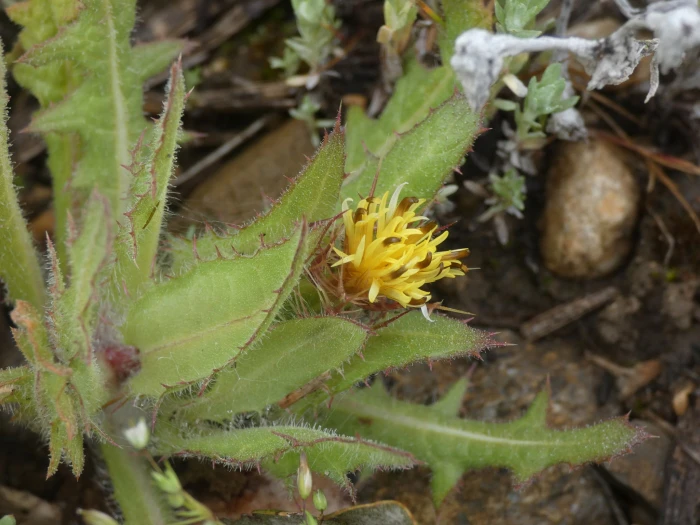Blessed Thistle
(Centaurea benedicta)
Blessed Thistle (Centaurea benedicta)
/
/

Yves Bas
CC BY 4.0
Image By:
Yves Bas
Recorded By:
Copyright:
CC BY 4.0
Copyright Notice:
Photo by: Yves Bas | License Type: CC BY 4.0 | License URL: http://creativecommons.org/licenses/by/4.0/ | Rights Holder: Yves Bas | Publisher: iNaturalist | Date Created: 2021-05-11T10:25:36-07:00 |

























Estimated Native Range
Climate Requirements for Framingham, Massachusetts
| This Plant | Your Site | Plant Suitability for Your Location | ||
|---|---|---|---|---|
| • Precipitation | 21" - 40" | 46" | Aquatic | Aquatic |
| • High Temp. | 78°F - 92°F | 84°F | Your summer temperatures are normal for this plant. | Excellent |
| • Low Temp. | 29°F - 40°F | 15°F | Your winter temperatures are normal for this plant | Excellent |
This plant may not grow well at your location - your precipitation is too high.
Summary
Centaurea benedicta, commonly known as blessed thistle, is an annual herb native to Europe and extending east to Pakistan. It typically grows up to 24 inches tall and is characterized by its leathery, hairy leaves and vibrant yellow flowers that bloom in dense, spiny flowerheads during the summer months. The flowers are quite showy and attract pollinators. In its native habitat, blessed thistle is often found in dry, open fields and rocky slopes.
Blessed thistle is valued for its medicinal properties and has been used traditionally to aid digestion and liver function. It is also used ornamentally for its striking flowerheads and is sometimes grown in cottage gardens or as part of wildflower mixes. This plant prefers full sun exposure and well-drained soils, making it suitable for xeriscaping. It is drought-tolerant once established and requires minimal maintenance. However, it can become aggressive and is considered a noxious weed in parts of North America. Gardeners should be cautious about planting it outside its native range and check local regulations.CC BY-SA 4.0
Blessed thistle is valued for its medicinal properties and has been used traditionally to aid digestion and liver function. It is also used ornamentally for its striking flowerheads and is sometimes grown in cottage gardens or as part of wildflower mixes. This plant prefers full sun exposure and well-drained soils, making it suitable for xeriscaping. It is drought-tolerant once established and requires minimal maintenance. However, it can become aggressive and is considered a noxious weed in parts of North America. Gardeners should be cautious about planting it outside its native range and check local regulations.CC BY-SA 4.0
Plant Description
- Plant Type:
- Height: 1.2-1.75 feet
- Width: 0.75-1 feet
- Growth Rate: Moderate, Slow
- Flower Color: Yellow
- Flowering Season: Spring, Summer
- Leaf Retention:
Growth Requirements
- Sun: Full Sun
- Water: Low
- Drainage: Fast
Common Uses
Bee Garden, Drought Tolerant, Edible*Disclaimer: Easyscape's listed plant edibility is for informational use. Always verify the safety and proper identification of any plant before consumption., Low Maintenance
Natural Habitat
Native to dry, open fields and rocky slopes in the Mediterranean region
Other Names
Common Names: St. Benedict’s Thistle , Holy Thistle
Scientific Names: Centaurea benedicta , Benedicta officinalis , Calcitrapa benedicta , Calcitrapa benedicta , Calcitrapa lanuginosa , Carbeni benedicta , Carbeni benedicta , Carbeni benedicta , Carbenia benedicta , Carbenia benedicta
GBIF Accepted Name: Centaurea benedicta